iPhone 14 Pro and Pro Max review: Just different enough
Image Credit: Cherlynn Low / Engadget
Emergency SOS and eSIM setup
All iPhone 14s, Pro or not, will be able to connect to satellites so you can send emergency messages when cellular or WiFi signals aren’t available. Thanks to a new high-g accelerometer and a high dynamic range gyroscope, they’re also able to detect if you’ve been in a severe vehicle crash detection. This isn’t something I can safely test, so we’ll have to take the company’s word that the feature works. Meanwhile, Emergency SOS via satellite is rolling out in November in the US, so I haven’t been able to check it out either. But based on a demo I took following the Apple event, it appeared to work.
First, when you’re away from cellular and WiFi networks, you’ll see an SOS graphic that lets you know you can still dial 911 and the iPhone will use any other available network to place your call. But when none of those are available and you want to use Emergency SOS via Satellite, you’ll first have to use the Phone app to dial 911. When the device is unable to connect and you’re in a situation with satellite access (i.e. you’re not surrounded by buildings and are in the wilderness with a clear view of the sky), Apple will prompt you to use satellite communications.
Having to first dial 911 seems unintuitive if your focus is trying to send a text or connect to a satellite, but Apple wants you to think of this feature more as a backup to calling emergency services. Only when you fail to connect to 911 should you consider satellite messaging as a fallback. The company has relay centers set up, too, with staff who are trained to help users get in touch with the closest emergency responders in case there aren’t any nearby that accept text messages.
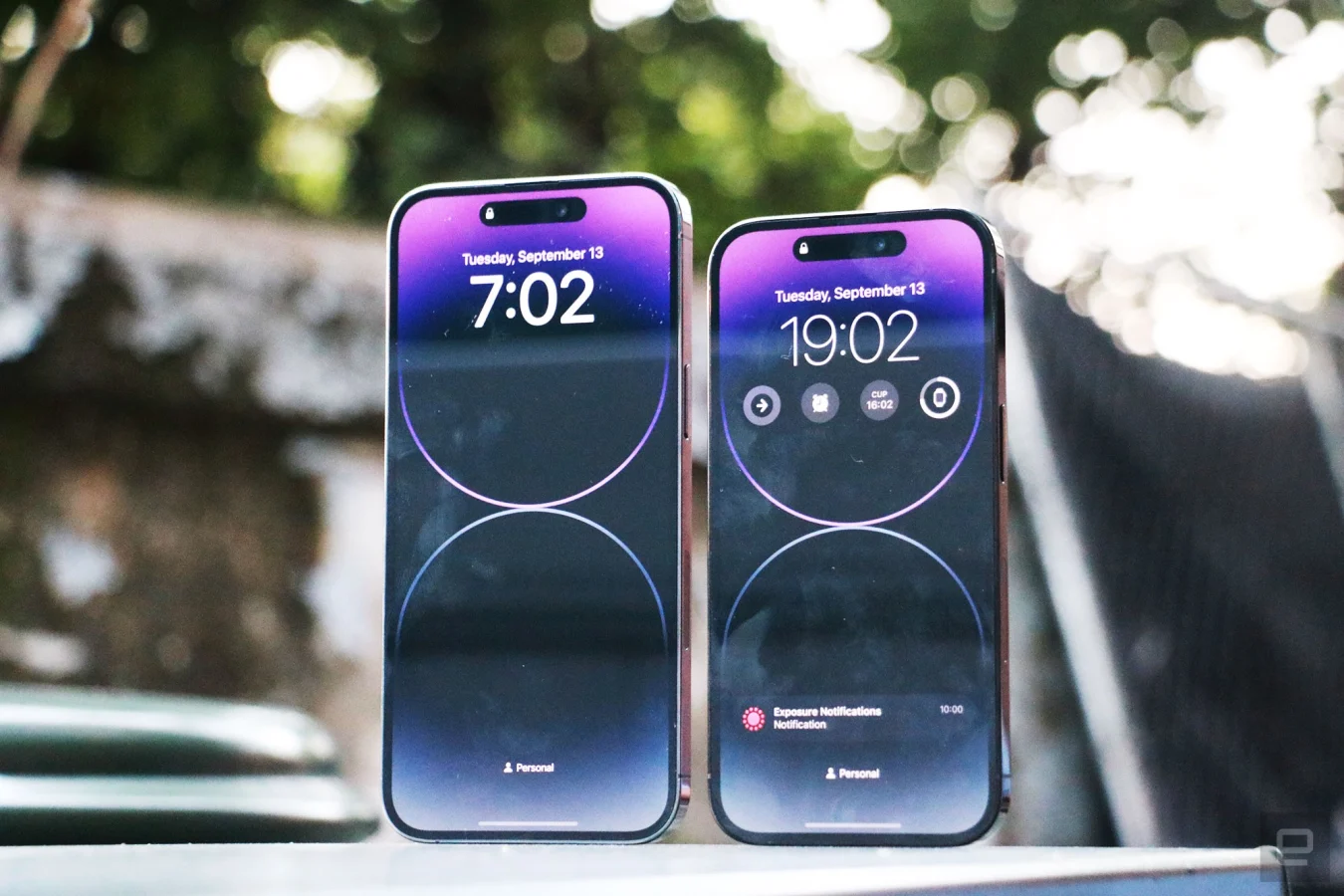
Cherlynn Low / Engadget
During my demo, an Apple rep showed what it would look like when communicating with one such relay center (presumably aware that we were in a hypothetical situation). After failing to reach 911, the iPhone 14 showed a few multiple-choice questions that the rep answered quickly, describing their condition and environment. The system then sent a report summing up the situation and providing the latitude and longitude of our location. While that message was being sent, our demo iPhone 14 appeared to lose connection to the satellite it had first latched on to and we had to wait till another came by to finish sending the report. When that was done, the phone brought up the conversation that it had started in Messages with emergency services.
Texts that were sent over satellite were in gray bubbles, while the responses came back in green. We went back and forth with the responder until a theoretical team had been dispatched to our location.
The satellite communications tool can also be used in the Find My app to share your location with family and friends. I was able to test this out at the demo, and I followed the directions on an iPhone 14 to point at a satellite coming over the horizon behind Apple Park. I was told to stay still while a connection was established, after which my location was sent to a contact on the sample iPhone. The system will tell your friends that your position was shared “via Satellite” — in case those bragging rights are important to you. Then, you won’t be able to send your location via satellite again for 15 minutes.
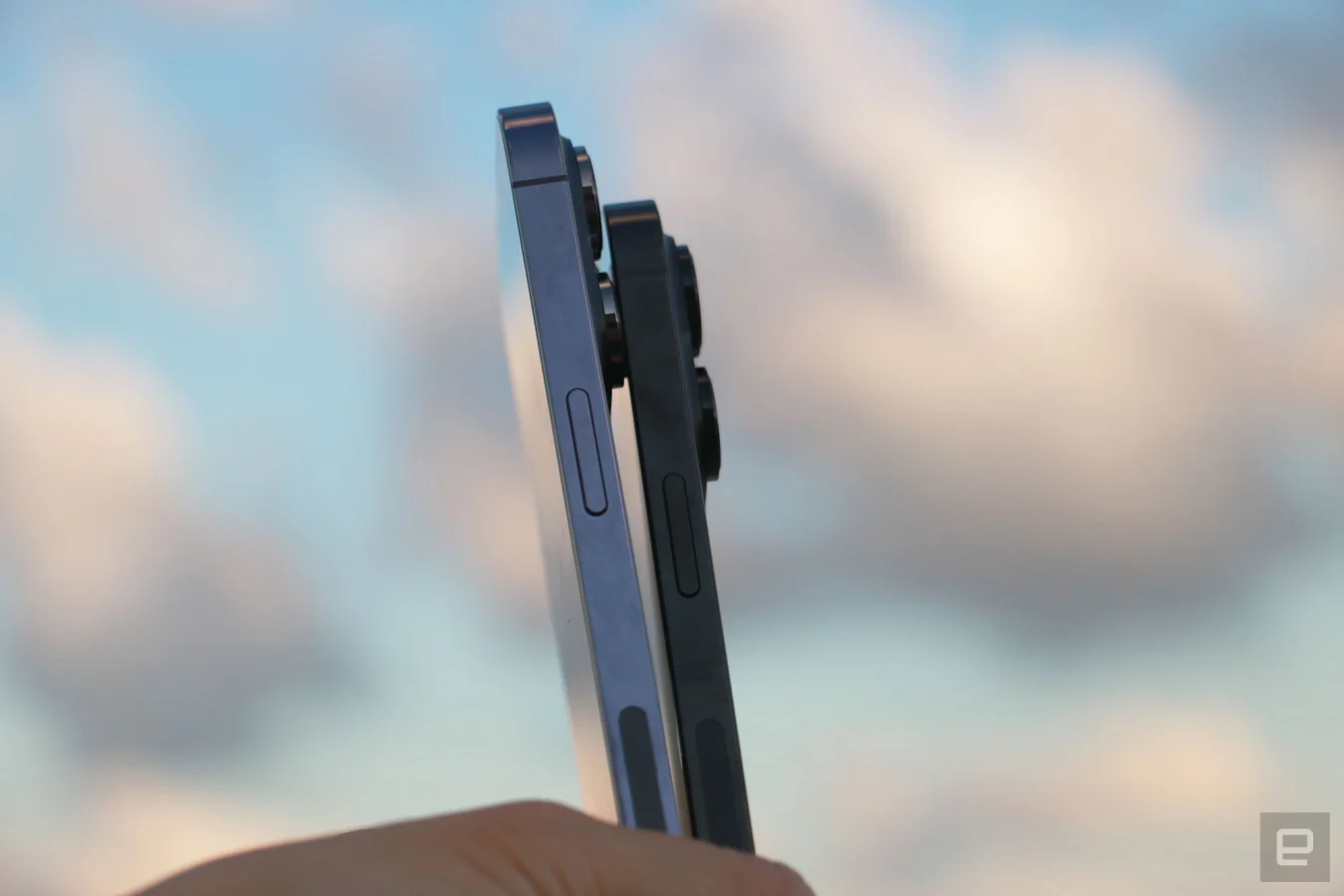
Cherlynn Low / Engadget
While I can see people potentially abusing this for sheer entertainment, I can also see how it might be useful to keep your loved ones abreast of your whereabouts as you wander out in the wilderness. This shouldn’t be a feature that impacts your daily life, but that could be very helpful if you’ve lost your signal while exploring.
Another change to the iPhone 14 is the removal of the SIM card tray. I’ve long felt that a SIM-less world is a seamless world, and when carriers worldwide support it we will be able to more conveniently roam globally. The problem is, I’m not sure we have the infrastructure yet.
Apple may be a bit premature in getting rid of the SIM card tray, but it could give US carriers the push they need to adopt the format. Apple has offered eSIM support since the iPhone Xr in 2018, and the company says it’s had a lot of adoption growth. With the iPhone 13 last year, Apple started using eSIM as the primary method of activation in all US retail stores, too. In general, setting up my review unit’s service was painless — all I had to do was wait two minutes for Verizon to activate my line. Apple also offered the option of converting my existing physical card to a digital one without having to leave my apartment.
It’s funny that Apple has thrown caution to the wind and fully embraced eSIM before it adopted USB-C, though. The charging standard is more prevalent and would make many people’s lives more convenient. This is one area where the iPhone 14 Pro feels stuck in the past.
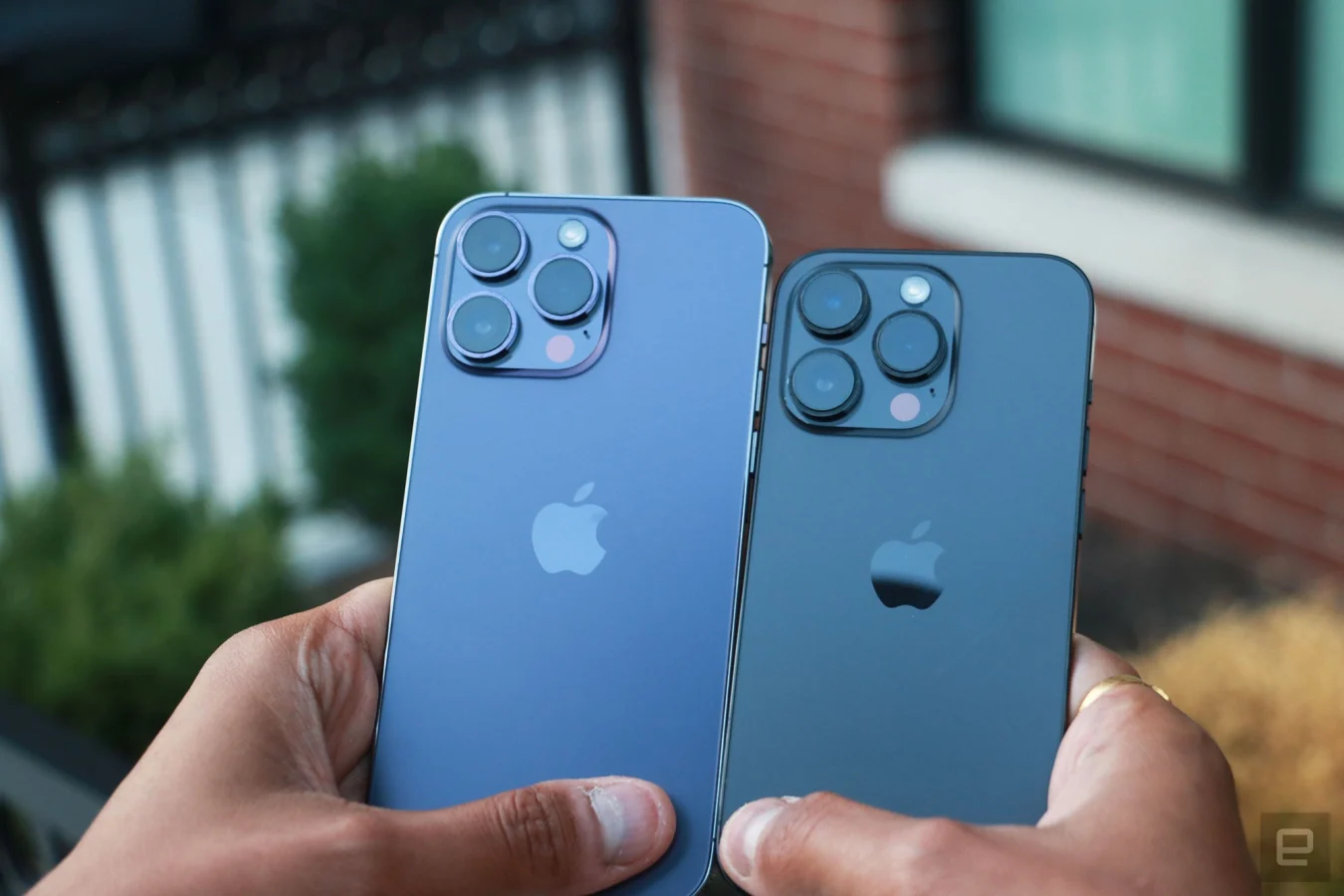
Cherlynn Low / Engadget
Cameras
With a new 48-megapixel primary sensor, updated low-light processing algorithm called Photonic Engine and new features like Action mode for improved video stabilization, the iPhone 14 Pros’ cameras promise a meaty upgrade. But in my testing so far, the changes seem minor.
In fact, most of the photos I took from the iPhone 14 Pro and 13 Pro are basically indistinguishable. Sometimes images from the newer phone were brighter, sometimes they weren't. The 13 Pro delivers pictures that are slightly cooler with more saturated colors, and I frequently preferred its results. Meanwhile, the Pixel 6 Pro produced pictures that were about the same in terms of quality and split the difference in color temperature.
All three phones were adept at keeping details crisp even in shadows. The lines inside the roof of a shelter were sharp when I magnified the pictures. When I used the telephoto lens to zoom in to 3x, though, the iPhone 14 Pro produced the brightest image. It also delivered the punchiest colors on some graffiti under an overpass.
Gallery: iPhone 14 Pro camera samples | 28 Photos
Gallery: iPhone 14 Pro camera samples | 28 Photos
However, sometimes the iPhone 14 Pro actually does worse than the 13 Pro and Pixel. In my shots of a park, the 14 Pro had the least saturated greens. In general, the quad-binning of the 48-MP sensor doesn’t seem to drastically improve image quality, at least in daylight.
A similar story can be told of the cameras in low light. In one example, the iPhone 14 Pro’s shots had the most accurate color and cleanest details, beating the Pixel 6 Pro at capturing the individual lines on a leaf. But Google’s flagship did a better job with a picture of a bright bar in a dim restaurant. It clearly captured individual leaves on a potted plant on a shelf, while the same part of the picture was shrouded in shadow when shot with the iPhone 14 Pro.
The Pixel also took generally brighter nightscapes of Manhattan, with the iPhone 14 Pro coming in very close behind and differences boiling down to minor variations in color temperature. Both devices rendered the words “Now Leasing” on a faraway building equally clearly — that is to say, slightly mottled but impressive for how dark and distant the lettering was. Compared to the 13 Pro, too, the latest iPhone doesn’t offer a huge improvement. But Apple is definitely closing the gap on Google when it comes to low light performance.
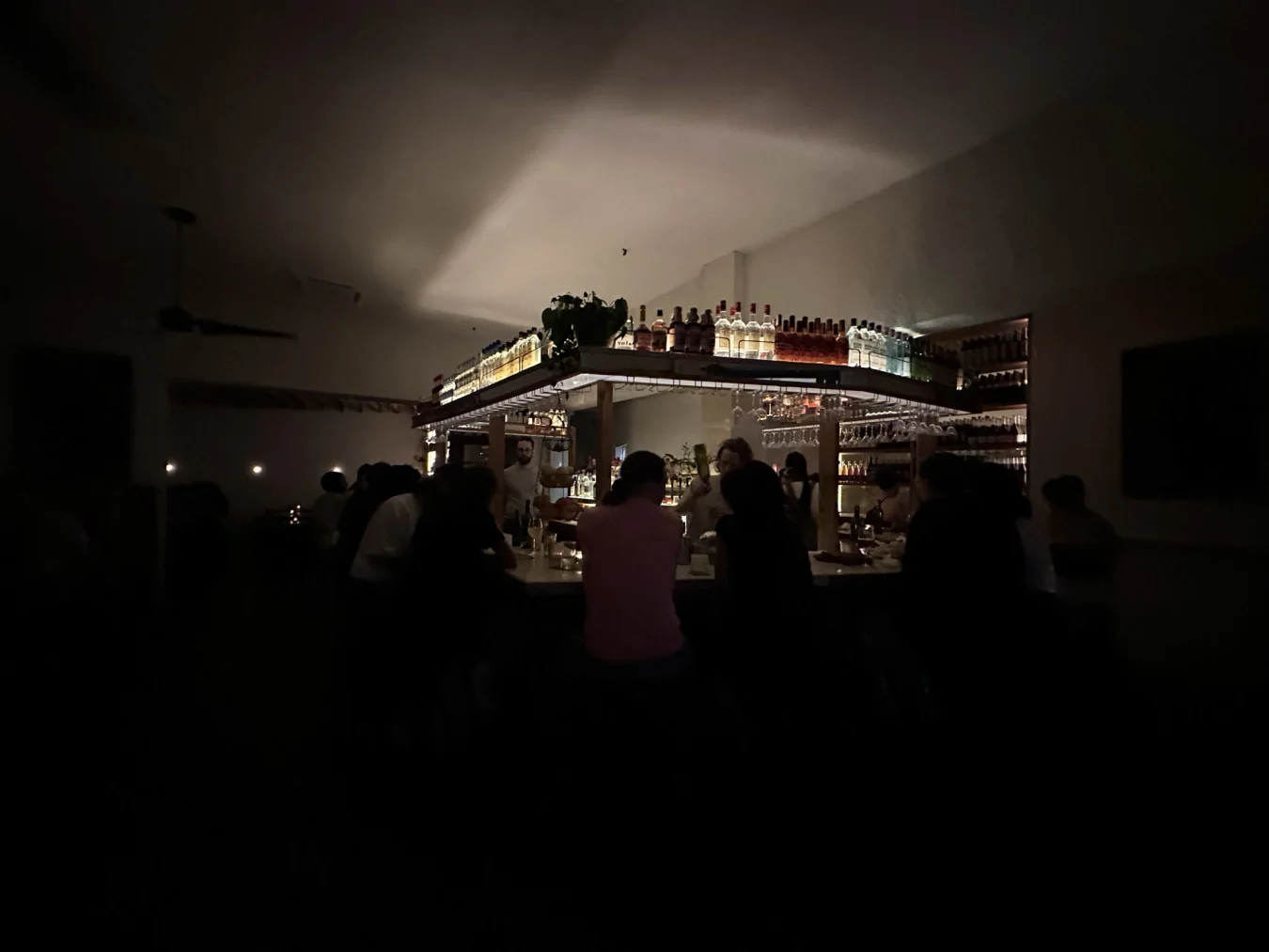
Cherlynn Low / Engadget
I still prefer the Pixel for portrait shots, though. While the iPhone 14 Pro’s new focal length of 24mm is supposed to be better for portraits, it still isn’t as adept as Google at picking out subjects and blurring out the background. I used all three phones to snap a friend chilling with one leg up on a park bench, and the Pixel was best at keeping the scar on his knee in crisp detail.
In general, most people comparing the iPhone 13 Pro and 14 Pro won’t notice a major difference in picture quality. But advanced users will appreciate the ability to shoot 48-MP images in ProRaw, which will allow them to capture greater detail.
Video is another area that got an improvement too, with support now for up to 4K resolution and 30 frames per second in Cinematic Mode. I don’t usually shoot clips that sharp, but the footage I got of a dog chasing a frisbee came out smooth and vivid.
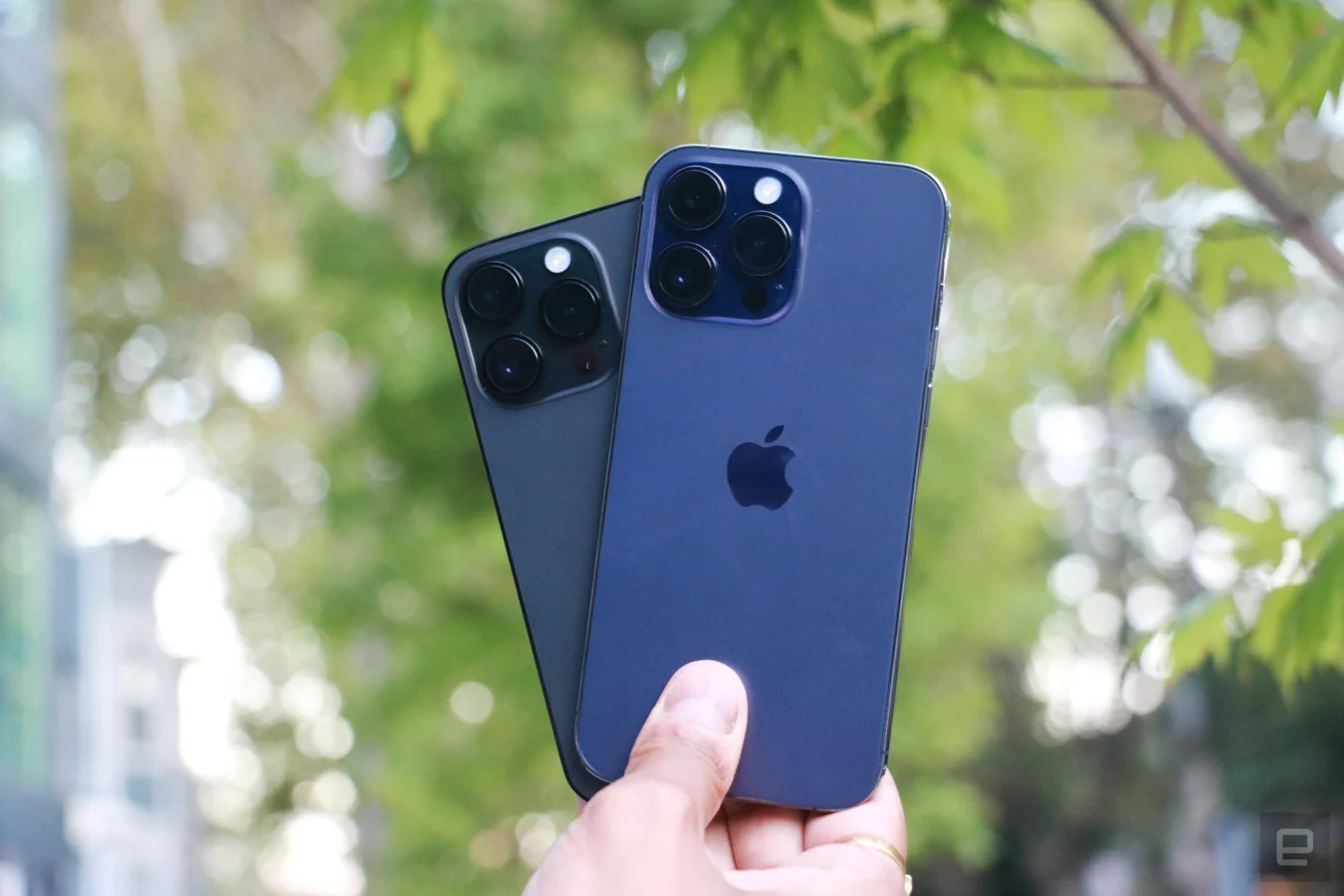
Cherlynn Low / Engadget
I also checked out Action Mode by chasing my friend up and down a path, recording both with and without the new stabilization feature. I did notice slight improvements, but frankly, Apple was already delivering impressively stable footage.
The same can be said for selfies taken with the TrueDepth camera up front. In general, the iPhone 14 Pro’s pictures here came out slightly brighter than the 13 Pro’s and, although autofocus is a new feature, I haven’t noticed a big improvement. In selfies where I was headbanging or where a friend was fidgeting, both the iPhone 13 and 14 Pro delivered crisp shots.
So the changes to the iPhone 14 Pro’s cameras aren’t a dramatic jump from last year’s model, but anyone looking to upgrade from an iPhone 12 Pro or older is likely to find the latest flagship a satisfying improvement.
Performance and battery life
As expected, the iPhone 14 Pro and Pro Max are smooth, well-tuned machines that can handle any task thrown at them. Apple’s new A16 Bionic chip handled my massive selfie binges while playing Spotify in the background alongside concurrent timers, Maps navigation and more. In the brief time I’ve had the iPhone 14 Pro, it’s gotten warm but not uncomfortably so, which is more than I can say for my Pixel 6 Pro and iPhone 12.

Cherlynn Low / Engadget
In spite of the AOD I haven't noticed the battery running perilously low even after a long day starting with a 10am workout, followed by numerous camera test sessions and a night out. I got home at 1am with some juice to spare. One night I forgot to charge the iPhone 14 Pro and had to run to a morning workout with just 19 percent in the tank. It still lasted more than an hour and I was even able to do some testing.
Wrap-up
From the outside, the iPhone 14 Pro and Pro Max don’t look dramatically different from their predecessors, aside from the Dynamic Island. But thanks to the Always On Display and crisis-preparedness features like crash detection and Emergency SOS, the iPhone 14 Pros feel potentially more useful in unforeseen circumstances. Sure, the camera updates feel less significant than I expected. But anyone upgrading from an older phone will appreciate what Apple has to offer.
All products recommended by Engadget are selected by our editorial team, independent of our parent company. Some of our stories include affiliate links. If you buy something through one of these links, we may earn an affiliate commission. All prices are correct at the time of publishing.

